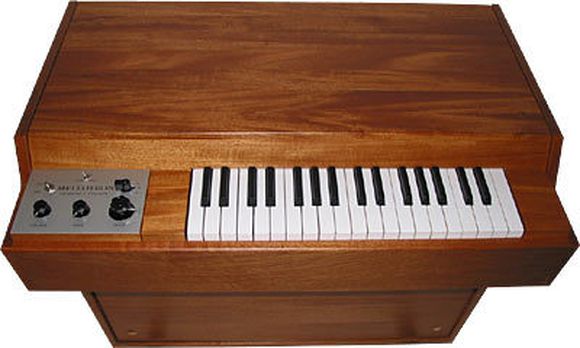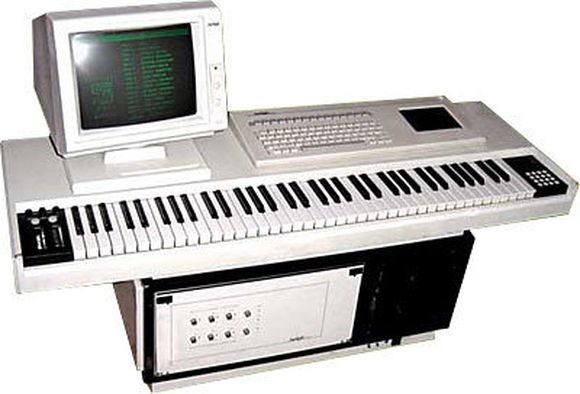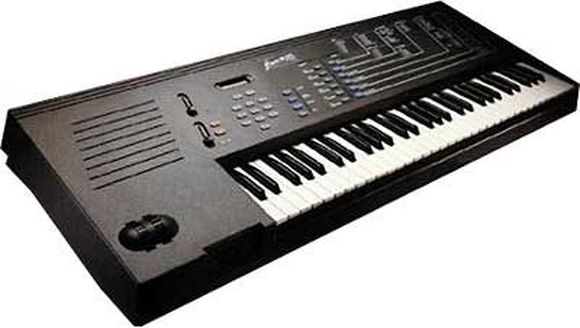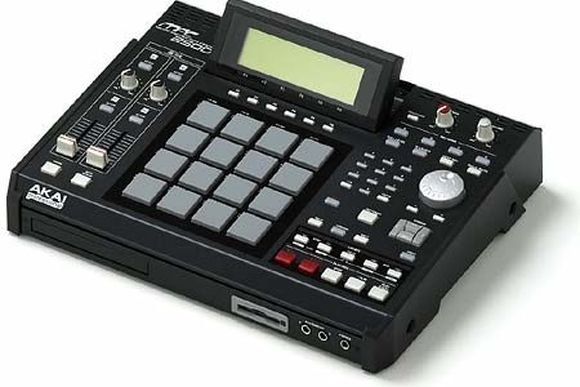3. Origins
The initial steps towards sound storage were taken long before the digital revolution. Organ builders played an intriguing role in this, as they attempted to arrange special pipes to reproduce sounds like flutes and trumpets in corresponding registers. The Hammond organ, one of the first electronic instruments, used electromagnetic generators and drawbars to create a controlled blend of several sine waves. Electronic organs produced the fundamental tonal colors of bassoon, oboe, trumpet, or flute through oscillators, filters, envelopes, and more. However, the acoustic peculiarities of the original instruments could not be accurately replicated. This led to the development of the Mellotron. This keyboard instrument used tapes; each individual note of an original instrument was recorded and cut into an endless loop. When a key on the Mellotron was pressed, the corresponding loop was played. Unlike other electric or electronic instruments, the Mellotron did not attempt to synthetically replicate the sound, which aligns with the basic principle of sampling (recording and playback). Nevertheless, the possibilities offered by digital technology today are significantly greater.

After theoretical experiments and scientific groundwork, Peter Vogel and Kim Ryrie built the first true sampler with synthesizer functions in 1979, the Fairlight CMI, based on the Quasar, a precursor to sampling sound generation, boasting an impressive 8-bit resolution at 24 kHz sampling rate. The maximum storage capacity reached approximately 1 second with 16 kB of RAM, just enough for a few drum samples. Nevertheless, it was a sensation. With the Fairlight CMI 2, it managed to convince professional customers as well, and that's when the characteristic airy and scratchy samples or orchestral hits from the first systems appeared on the charts ("Owner of a Lonely Heart").

From this point onward, competitors like Roland, Yamaha, EMU-Systems, and other instrument manufacturers embarked on technological pursuits. Their goals were not to be left behind in development and to offer sampling to the broader market. This was quite understandable because the initial Fairlight systems cost around $800,000 to $900,000 when fully equipped. The Synclavier brought the first sampling workstation to the market, easier to use, but unfortunately, its price was a significant obstacle to sales. EMU-Systems succeeded in making sampling more affordable with the Emulator I (1981 for around 30.000 DM), Emulator II, and III (1987). The late '80s saw the introduction of the Emax I and II, models priced under 10.000 DM that included numerous filters, LFOs, and intriguing features. EMU models are particularly famous for their first-class analog filters.

Even today, hardware samplers are being manufactured. Akai, with models like the S612, S700, S900, etc., was one of the first manufacturers with the goal of reaching all layers of buyers with sampler models of all price ranges. Today, Akai's Groove samplers from the MPC series are pioneering modern DJ and drum samplers. Korg also offers samplers, and virtually every home or stage keyboard incorporates sampling in some form as a leading technology.
However, the megatrend in recent years has been the increasing integration of sampling technology into existing software sequencers. With Logic's EXS24 or Steinberg's Halion plugins, two software samplers were created, combining all the advantages of hardware samplers and boasting vastly superior storage capacities. The development of this concept continues rapidly due to the great success of this plugin category.






